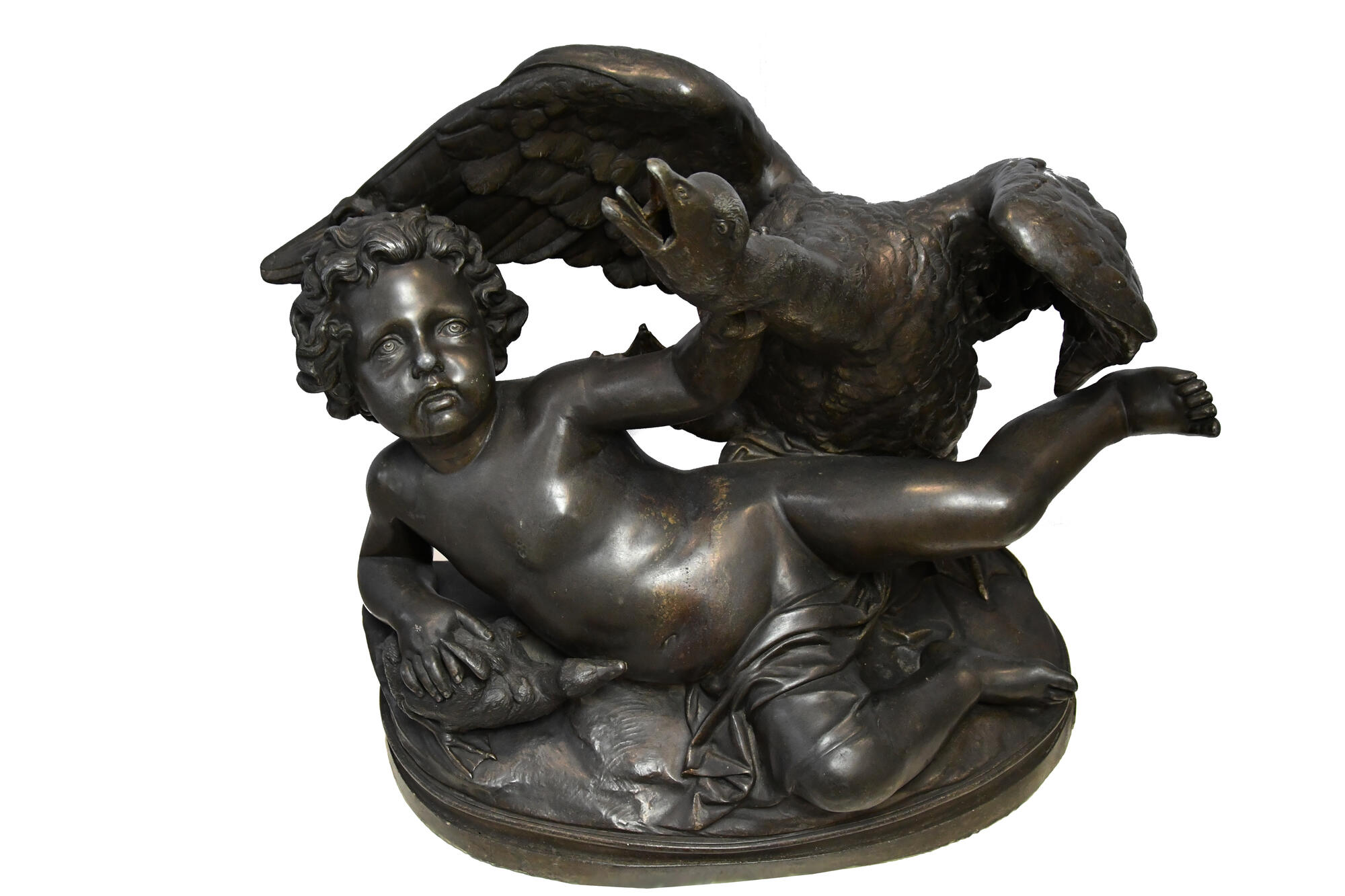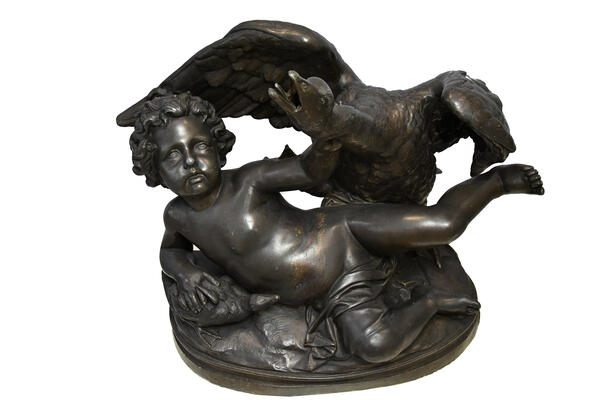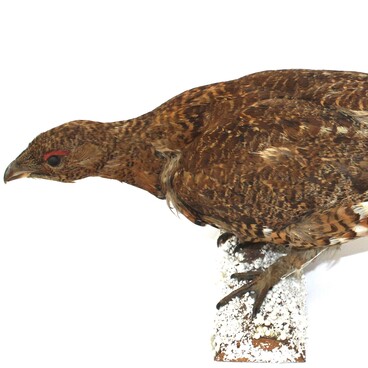The Syzran Museum of Local History and Lore acquired the Boy with a Goose sculpture in 1925 from the Usolye estate of the Orlov-Davydovs. Among the Russian provincial estates built in the early 19th century in the vicinity of Samara, the estate in Usolye was definitely the most famous one: the Orlov counts and their direct descendants, the Orlov-Davydovs, owned a large tract of land there for 150 years.
A lot of people were impressed by the beauty of the three-story manor house that looked like a castle. In front of the manor house, there was an area with a fountain, marble and bronze sculptures—these were brought here by practically every member of the family from their trips around Europe. One such sculpture was ‘A Boy with a Goose.’
It depicts a boy struggling with a goose that he views as a very serious adversary. Under the boy’s right hand, we can see a small gosling. The sculpture was made based on a model created by the German sculptor F. Schindler. An exact replica was cast in bronze in 1854 and used to sit in front of the western facade of the Farmer Palace in the Peterhof museum-reserve: in 1866, architect Eduard Gan had a fish pool built here, which he decorated with a miniature cascade and a bronze sculpture. The original sculpture has been lost, and the one you can see there today is a copy.
In Renaissance Italy, the evolution of sculpture outstripped that of other types of art for some time. Sculptures were soon dominating Italian squares, country estates, and cozy gardens. Throughout the history of fountains, sculptures were a prerequisite. Fountains with sculptures have always combined the best creations of their authors in architecture, and so it should come as no surprise that they gained such popularity that Italian designs were liberally borrowed and could soon be seen in gardens in England, France, Czech Republic, and Russia.
At the height of the art of park landscaping, some very complex forms of decorative sculptures soon emerged, and anatomically accurate depictions of children’s bodies became very popular. Sculptures of this kind were vastly popular in the 19th and 20th centuries and were seen as representative of beauty and elegance.
A lot of people were impressed by the beauty of the three-story manor house that looked like a castle. In front of the manor house, there was an area with a fountain, marble and bronze sculptures—these were brought here by practically every member of the family from their trips around Europe. One such sculpture was ‘A Boy with a Goose.’
It depicts a boy struggling with a goose that he views as a very serious adversary. Under the boy’s right hand, we can see a small gosling. The sculpture was made based on a model created by the German sculptor F. Schindler. An exact replica was cast in bronze in 1854 and used to sit in front of the western facade of the Farmer Palace in the Peterhof museum-reserve: in 1866, architect Eduard Gan had a fish pool built here, which he decorated with a miniature cascade and a bronze sculpture. The original sculpture has been lost, and the one you can see there today is a copy.
In Renaissance Italy, the evolution of sculpture outstripped that of other types of art for some time. Sculptures were soon dominating Italian squares, country estates, and cozy gardens. Throughout the history of fountains, sculptures were a prerequisite. Fountains with sculptures have always combined the best creations of their authors in architecture, and so it should come as no surprise that they gained such popularity that Italian designs were liberally borrowed and could soon be seen in gardens in England, France, Czech Republic, and Russia.
At the height of the art of park landscaping, some very complex forms of decorative sculptures soon emerged, and anatomically accurate depictions of children’s bodies became very popular. Sculptures of this kind were vastly popular in the 19th and 20th centuries and were seen as representative of beauty and elegance.



